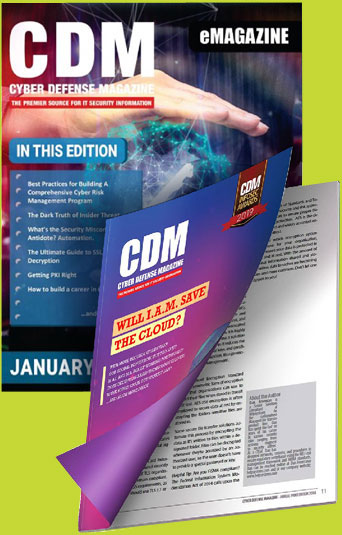by Ian Pitt, Chief Information Officer, LogMeIn
People are spending more time online than ever before. This reality has been exacerbated by the pandemic as many people shifted to working from home and connecting with family and friends virtually, making them more reliant on their devices. But what does this mean for the holiday shopping season?
This year, many of us are opting to shop for our loved ones online. It is expected that this year, e-commerce holiday sales will grow between 25% to 35%. Although people are being cautious about the amount of money they allocate for the holidays, on average they will still spend $1,387 per household.With the increase of online transactions, the question becomes, do consumers know the cyber risks they face and how to protect themselves?
Staying secure while shopping from home
It’s no surprise that threat actors seek to take advantage of the high peaks of online transactions during the holidays. In fact, last year retail fraud increased 29% during the start of 2019 holiday shopping season. With the increase of consumers shopping online, it is only natural that threats will increase at the same rate – if not more. Although this paints a negative picture for anyone ready to type in their credit card numbers to get the perfect gift, there are many things consumers can do to keep their information secure.
To mitigate cyber threats during the holidays, here are a few simple steps to ensure consumers can shop securely online this season:
- Ensure websites are legitimate. The devil is in the details. Before checking out and making any payments, make sure the website you’re purchasing from is secure and has HTTPSnot HTTP in the URL. Attackers can use such flaws to capture the user’s session identifier and impersonate the user in the application.
- Rule out public WiFi networks. Anything involving your personal information should go through a secure network. Avoid shopping while relying on public WiFi. It will leave you exposed to cybercriminals on that public network who can keep tabs on your shopping transactions and try to get access to your personal information.
- Pay attention to emails. From receipts, to tracking numbers, sales and deals, the shopping season brings an uptick of emails for everyone. Do not trust everything you see. Check for suspicious links. Pay attention to email addresses. Don’t click on attachments from people you don’t recognize and look out for brands you don’t have accounts with. Threat actors will be leveraging known brands and sites in phishing attempts to get your ‘clicks’ in.
- Truly secure your passwords. 91% of people know password reuse is insecure, yet 66% do it anyway. It is time to change this. Passwordsare the keys to your personal information, whether for your favorite online shop or your online bank account. Be diligent. Use unique passwords, a minimum of 12 characters with upper/lower case numeric and special characters, and never share personal information within.
- Choose solutions that help with cyber hygiene. The average person has about 85 online accounts. Remembering all those passwords is simply not doable. A password manager has features that will help not only store all your passwords, but also any information you need – like bank accounts and addresses – in a secure vault. A password manager will help improve your security while also making the purchase experience seamless and convenient.
- Tighten your security with multi-factor authentication (MFA). A second layer of security is always better than one. MFA requires another login step after your password. Whether it is a code sent to an email, a text message or leveraging biometrics, MFA will ensure no one can access your account even if your password is compromised.
- Dark web monitoring. Many consumers don’t know much about their digital footprint. In fact, many don’t know if their information has been compromised. Dark web monitoring scans for your information on the dark web and provides you with a readout of which accounts have been compromised in order to take the necessary steps to mitigate any issues.
Get Ready, Get Set, Shop!
This shopping season, scammers and threat actors won’t get the best out of the holidays. Basic precautions go a long way towards keeping your information – and your money – safe. From using a secure WiFi network and paying special attention to emails, to changing passwords and leveraging solutions like MFA and password managers, these tips will help alleviate some of the growing risks online. You can rest assured that your personal information is safe while you are browsing for amazing deals and the perfect gift.
About the Author
Ian Pitt is the Senior Vice President and Chief Information Officer at LogMeIn, where he is responsible for global Cyber Security, Governance, Corporate IT, Business applications and Product Operations. He has over 20 years of experience leading business process management and optimization, as well as industry compliance/governance processes and cyber security.
Ian can be reached online in LinkedIn and at our company website LogMeIn or LastPass


